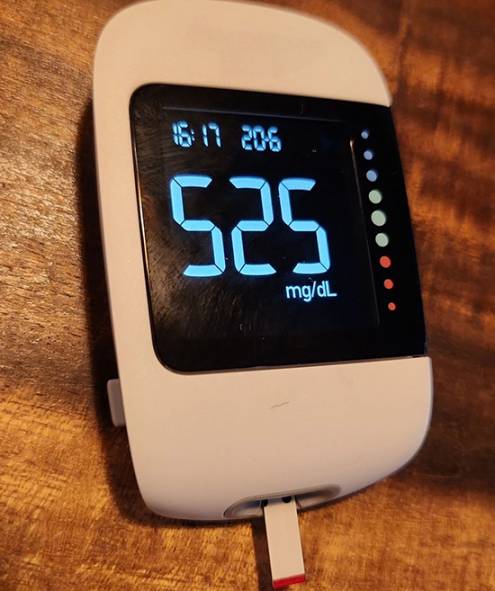Sam Milby on having diabetes
In a recent Instagram post, local actor Sam Milby revealed that he is diabetic. He is only 40 years young, he is physically active and he has always been fit. He also said that diabetes doesn’t run in his genes. So, of course, he never expected it.
“I’ve always thought of myself as a healthy person. I don’t have a sweet tooth, bihira din mag junk food. Pero last year, I found out na may type 2 diabetes na ako. My parents and grandparents never had it.”
“I just wish I got checked earlier, ’nung pre-diabetes pa. My advice? Don’t ignore the symptoms (my main symptoms: always thirsty and urinating often) and get checked up regularly,” shared Sam in his post of a glucose test with a very high 525 mg/dL blood sugar reading.
I have witnessed how dedicated Sam is to his fitness regimen and regular workout sessions. As he said, regular checkups, even if you look and feel great, should be a must.”

The early signs of type 2 diabetes
So what are the early signs of type 2 diabetes?
There are several early symptoms that you may be diabetic, so awareness of your bodily functions is crucial. Are you always thirsty? Do you urinate often, especially at night?
Are you always tired? Is your vision blurry? Are you always hungry, especially at night? Did you experience significant weight loss or gain without any dietary changes or increase in physical activity?

Are your wounds, burns, and sores taking longer to heal? Do you have dark patches around the neck, armpits, elbows, knuckles, and knees?
While symptoms vary per person, and some may not even show signs at all, the signs above are common to pre-diabetic and diabetic patients. If you have any of these symptoms, it is best to consult your health professional immediately. Your physician will prescribe laboratory tests to rule out a diabetic diagnosis.
Early detection is important in the proper management of this lifestyle disease. In my case, my early symptoms were leg cramps and frequent urinary tract infections.
Be mindful that many medications can cause spikes in blood glucose. These medications include steroids, medicines for mental conditions such as anxiety, ADHD, and depression. Birth control pills, statins to lower cholesterol, blood pressure-lowering drugs, medicines that treat HIV, decongestants, cough syrup, and even niacin.
Lifestyle changes you should make once diagnosed
Diabetes is a lifestyle disease, so management and a cure entail lifestyle changes. Nutrition-wise, choose a balanced diet rich in vegetables, fruits, whole grains, and lean proteins. Minimize sugary beverages, refined foods, processed foods, and saturated fats.

Exercise should be regular with at least 150 minutes per week of moderate-intensity exercise such as brisk walking, swimming, or cycling. Add weightlifting twice a week to build muscle and improve metabolism.
If you smoke, quit. If you drink, minimize intake to one drink per day for women and two a day for men. Manage your stress levels. Practice yoga, meditation, deep-breathing exercises. Take up a hobby or sport you enjoy.
Get regular medical checkups. That’s at least annually if you are well and quarterly if you are already pre-diabetic or diabetic. That also means periodic laboratory tests to monitor your blood sugar levels, blood pressure, cholesterol, and overall health.
What is a normal blood glucose reading?
A quick test in the clinic or at home is done with the use of a glucometer or glucose meter. A set comes with a finger prick that will allow you to get a blood sample. The blood sample is collected by a test strip that is connected to the glucometer.
After waking up and without taking anything, normal blood sugar is 80 to 100 mg/dL, pre-diabetic or impaired glucose is a reading of 101 to 125 mg/dL. A reading of 126 mg/dL and above will classify you as diabetic.
If you measure your blood sugar after eating, 170 to 200 mg/dL is considered normal. A 190 to 230 reading is pre-diabetic, while a reading of 220 to 300 mg/dL is that of a diabetic.
When you measure two to three hours after eating, a normal range will be 120 to 140 mg/dL, pre-diabetic reading will be 140 to 160 mg/dL, while a diabetic will show a reading of 200 mg/dL or higher.
When your blood sugar is too high (hyperglycemia), you may experience quick and unexplained weight loss, you feel sick, intense thirst and increased urination, vomiting, severe tiredness or fatigue, blurred vision, and fainting.
Low blood sugar or hypoglycemia may be accompanied by the following symptoms: hunger, fatigue, shakiness, headaches, confusion, dizziness, mood changes, sweating, fast heartbeat, and pale skin color.


